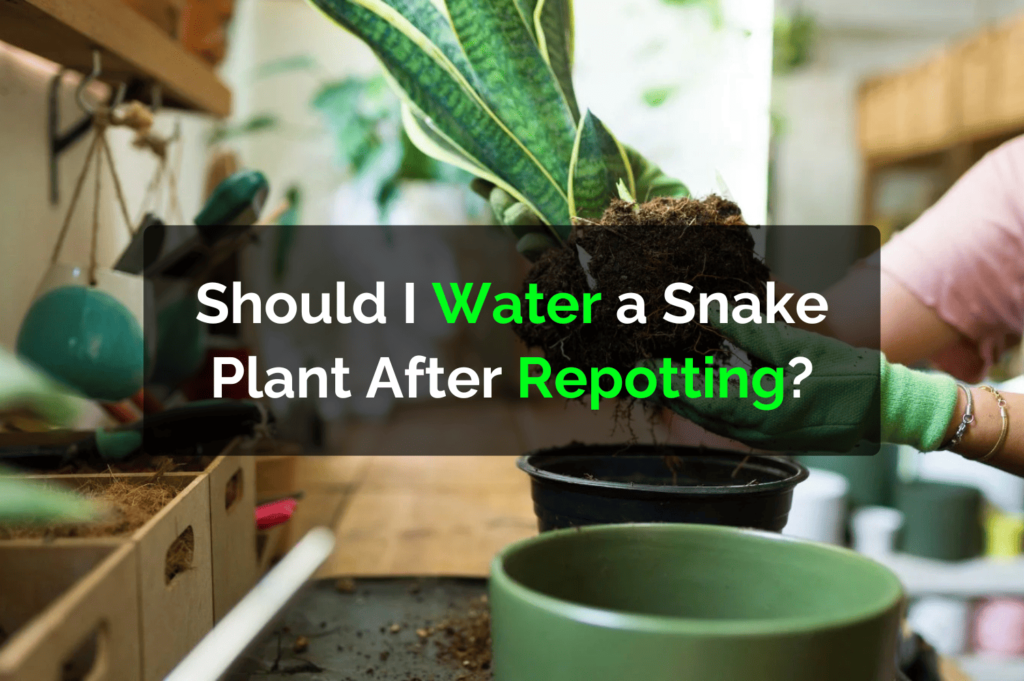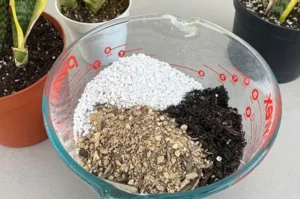Snake plants are known for being hardy, low-maintenance houseplants. However, repotting them requires a bit of care to avoid problems such as overwatering or root rot. One of the most common questions people ask is: Should I water a snake plant after repotting? Let’s explore this in detail.
How to Water a Snake Plant After Repotting It
Once you have repotted your snake plant, it’s important not to water it immediately. The root system needs time to adjust to its new container and soil. Watering right after repotting can cause stress, especially if the roots have been disturbed or trimmed. Wait for about 3 to 5 days before you water the plant. This waiting period allows any minor root damage to heal and reduces the risk of overwatering.
When you do water the plant, make sure to water it thoroughly until water drains out from the bottom of the container. Always use well-draining soil and a pot with proper drainage holes. Good soil drainage is key to preventing soggy roots and keeping your snake plant healthy.
This is How You Repot Your Snake Plant
- Prepare the new container: Choose a pot that is 1 to 2 inches larger than the current one. Ensure it has drainage holes at the bottom.
- Remove the plant: Gently take the snake plant out of its old container. Be careful not to damage the leaves or root system.
- Check the roots: Examine the roots for signs of rot or damage. Healthy roots are firm and white. Trim off any soft or brown roots.
- Add soil: Fill the new container with fresh, well-draining soil. A mix of cactus soil and perlite works well.
- Place the plant: Position the snake plant in the center and fill in the gaps with soil. Do not pack the soil too tightly.
- Let it rest: Avoid watering right after repotting. Let the plant sit for a few days to settle in.
After Repotting
After repotting, place your snake plant in a spot with indirect sunlight. Avoid exposing it to direct sunlight for a few days, as the plant may still be adjusting. Keep an eye on the leaves. If they appear firm and upright, your plant is happy. Droopy or yellowing leaves can be a sign of stress or overwatering.
Remember to be patient. Snake plants are slow growers, and it may take a few weeks for them to show signs of new growth. Keep the container in a room with moderate temperatures and avoid sudden temperature changes.
How to Fix an Overwatered Snake Plant
Overwatering is one of the biggest problems for snake plants. If you’ve accidentally given your plant too much water, don’t panic. Here’s how to fix an overwatered snake plant:
- Remove the plant from the pot: Gently take the plant out of the container and check the root system.
- Inspect and trim: Look for mushy or black roots and trim them off with sterilized scissors.
- Let it dry: Place the plant in a dry area and let the roots air dry for 24 to 48 hours.
- Repot in fresh soil: Use fresh, well-draining soil and a clean pot with drainage holes at the bottom.
- Water carefully: After repotting, wait for a few days before watering. Then, water sparingly and make sure excess water drains out from the bottom.
Monitor the leaves: If the leaves start to recover and look healthy again, you’ve successfully saved your plant.
Frequently Asked Questions (FAQs)
Can I use regular potting soil for snake plants?
It’s best to use well-draining soil, like cactus or succulent mix, combined with perlite for better soil drainage.
What type of container is best for a snake plant?
A container with proper drainage holes at the bottom is ideal to avoid overwatering and root rot.
How do I know if I’ve overwatered my snake plant?
Soft, mushy roots, yellowing leaves, and a soggy bottom of the container are signs of overwatering.
Should I mist my snake plant after repotting?
No, misting is not necessary. Snake plants prefer dry conditions and do not need misting.
Conclusion
Repotting a snake plant is simple if done with care. Do not water immediately after repotting; instead, wait a few days to allow the root system to settle. Use a container with good bottom drainage and ensure your soil drainage is excellent. Watch for signs of overwatering and always check the leaves and roots for any issues. With patience and proper care, your snake plant will thrive in its new home.






